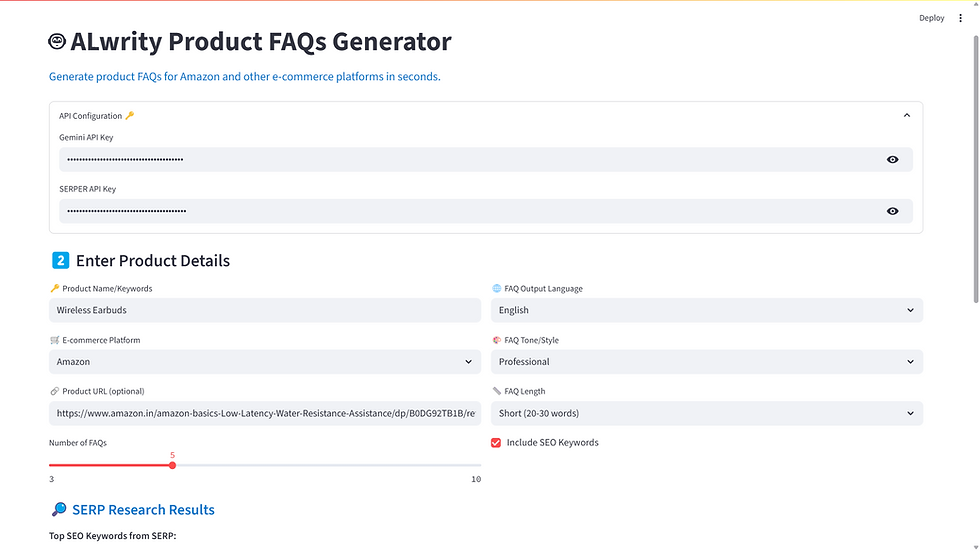Building Your Own AI Slide Maker
- DikshaAI
- Jul 24, 2024
- 4 min read
Ever wondered how to make your presentations faster and more engaging? With an AI-powered slide maker, you can! This guide will show you how to create your own AI tool that automates slide creation, making your work easier and more impressive.
Today, we have powerful AI tools at our disposal, ready to revolutionize how we create presentations. A highly detailed guide can be found here with code examples.
In this blog post, we'll explore the exciting world of AI-powered slide making, guiding you through the process of building your own tool using OpenAI's groundbreaking GPT-4 model.

Why Build Your Own AI Slide Maker?
Building your own AI slide maker offers several compelling advantages:
Efficiency: Say goodbye to tedious manual tasks! This tool automates the generation of visualizations, text insights, and even slide titles, freeing up your time for more strategic tasks.
Data-Driven Insights: Leverage the power of AI to analyze your data and extract meaningful insights, transforming your presentations from basic slides into data-driven narratives.
Customization: Tailor your slide maker to your specific needs. Control the style, content, and visual elements to ensure your presentations reflect your brand and message.
Let's Get Started: A Step-by-Step Guide
This guide will walk you through building your AI slide maker, explaining each step in detail.
Step 1: Setting the Stage: Environment Setup
Before diving into the code, we need to prepare our workspace. Ensure you have the following components installed:
Python 3.x: The versatile programming language that will power our slide maker.
PIL (Pillow): A library dedicated to image handling, allowing us to work with the visuals generated by our AI.
OpenAI's Python Client Library: This library will enable us to connect with OpenAI's services and harness the power of their AI models.
Finally, you'll need an OpenAI API key. Head to the OpenAI website, sign up for an account, and generate your API key—your passport to access OpenAI's incredible AI capabilities.
import os
from openai import OpenAI
client = OpenAI(api_key=os.environ.get("OPENAI_API_KEY"))Make sure to replace "OPENAI_API_KEY" with your actual API key or set it as an environment variable.

Step 2: Gathering Your Data
Your Data: This could be financial figures, survey results, or any other information you want to present.
Organize your data in a format that’s easy to understand. This will help the AI analyze and visualize it accurately.
Step 3: Uploading Your Data
Imagine uploading a spreadsheet so the AI can see and understand your data. You’ll prepare your data file and upload it to the platform that the AI uses.
Example Prompt:
"Upload a JSON file containing quarterly financial data for analysis."
Step 4: Creating the AI Assistant
AI Assistant: Think of this as setting up a smart assistant who will handle specific tasks for you.
You'll configure the AI assistant to analyze your data and generate visualizations. This assistant will be like a personal data analyst.
Example Prompt:
"Create an assistant to analyze financial data and generate visualizations."
Step 5: Defining the Task
Example Task: "Calculate profits by quarter and visualize them."
You’ll instruct the AI on what to do with your data. For example, you might ask it to calculate profits and create a chart showing the results.
Example Prompt:
"Calculate profit (revenue minus cost) by quarter and year, and visualize it as a line plot."
Step 6: Running the Task
Now, let the AI work its magic. It will analyze your data and create visualizations. This is similar to asking an expert to generate a detailed report based on your input.
Example Prompt:
"Generate a line plot with quarterly profits using different colors for each distribution channel."
Step 7: Generating Insights
Key Insights: The AI can summarize the most important points from your data.
You can ask the AI to provide insights, like "Online sales consistently lead in profitability, indicating a strong digital market presence." These insights will help you explain your data clearly.
Example Prompt:
"Provide two medium-length sentences of the most important insights from the plot."
Step 8: Creating an Image with DALL-E
DALL-E: An AI tool that creates images from text descriptions.
You can use DALL-E to generate images for your slides. For example, if you need an inspirational cover image for your presentation, just describe what you want, and DALL-E will create it.
Example Prompt:
"Create an inspirational image showing growth and a path forward for a hardware company."
Step 9: Making the Slides
Slide Creation: Automated tools can help you compile your data visualizations and images into polished slides.
Use these tools to assemble your slides quickly and efficiently. It’s like having a designer who arranges everything beautifully for you.
Example Prompt:
"Create a PowerPoint slide with the company name and subtitle on the left and an image on the right."
FAQs
Q1: What do I need to get started with creating an AI slide maker?
A1: You need Python and an OpenAI API key. Python is a programming language, and the OpenAI API key gives you access to powerful AI models.
Q2: How do I upload my data for the AI to analyze?
A2: Organize your data in a format like JSON or CSV, then upload it to the platform the AI uses.
Q3: What can the AI do with my data?
A3: The AI can analyze your data, calculate metrics like profits, create visualizations, and generate insights.
Q4: How does the AI generate images for my slides?
A4: The AI uses DALL-E, an AI tool that creates images based on text descriptions you provide.
Q5: Can I customize the tasks the AI performs?
A5: Yes, you can instruct the AI on specific tasks, such as creating charts or summarizing insights. Basic coding knowledge is helpful but not required. The guide provides instructions and prompts to interact with the AI.
Q6: How long does it take for the AI to generate the slides?
A6: The time varies depending on the complexity of the task, but the AI generally works quickly, often completing tasks in minutes.
Conclusion
By following these steps, you can create an AI slide maker that saves you time and enhances your presentations. ALwrity github code contains this and you try it without coding it yourself. We have enhanced the openAI code with streamlit app, google search around given slide title etc.
You don’t need to be a tech expert—just follow the guide, and you’ll be able to create professional, data-driven slides with ease. Happy presenting!





Comments